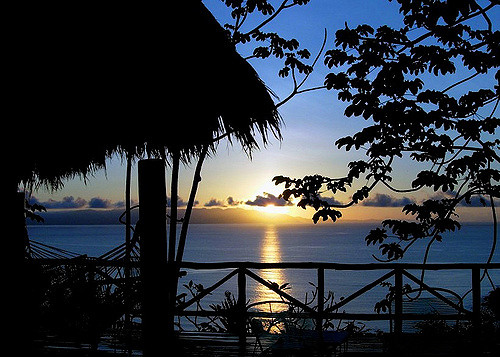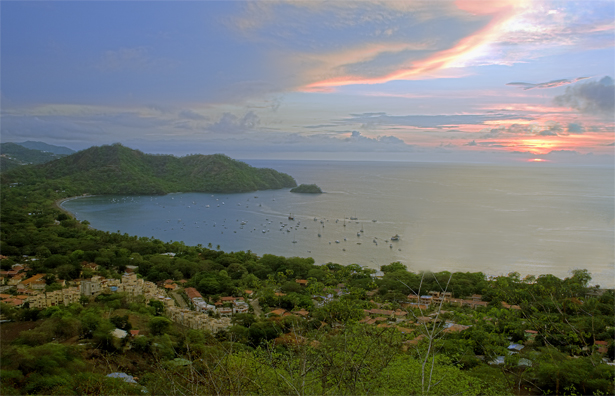Costa Rica Beaches
Beaches to Visit in Costa Rica
From time immemorial it is known that Costa Rica bears such a name, not because of the abundance of gold, or hidden mineral wealth, but because the beauty of its coasts and coastlines is such that it should be considered the greatest treasure in the country.
The advantage that Costa Rica offers is that the distances that separate the capital San José from the main coastal beaches and lanes do not mean a serious problem nor do they require expensive travel, which is added to the incredible tourist reality of a person who travel by car at the rate of 80 kilometers per hour, can be consumed in the waters of the Atlantic Ocean at 8 o'clock in the morning, take a trip at 10 o'clock, and be diving in the waters of the Pacific at 5 o'clock, still with the sun to spare to tan a little more.
This automotive truth, taken to the roads of the air, makes the same distance between Puerto Limón in the Caribbean and Puntarenas in the Pacific, covered in only one hour fifteen minutes of flight by express air.
This is explained, how is it that some tourists are amazed from the highest mountain peaks in the country, the vision of both oceans at once. Geographically, the coastal development of the country, from Punta Castilla on the mouth of the San Juan River (on the northern border) to the mouth of the Sixaola River (on the southern border) gives the Caribbean a length of 212 kilometers and one of 1,016 kilometers in the Pacific, from Mojones (on the northern border) to the so-called Hito de Burica (on the southern border). In these 1,228 kilometers of coastline, some of the most splendid coral and poly-formations of Central America are hidden, together with the ever-dominant presence of the neighboring forest.
The landscape begins in the north of the country, on the Pacific side, with the semicircular view of the Bay of Salinas, at the end of which open beaches of pearl gray sand and are located some of the most famous sport fishing sites. From this extreme point, around 100 beaches can be located on this coastline, whose variations in shape, color, type of sand, water temperature and landscape make them the best in Central America.
It should be noted, that it is on the Pacific side that Costa Rica offers the largest number of beaches for foreign tourists, with hotels and infrastructure that in some cases, without being exactly attached to the coast as in other parts of the world, is what close enough so that you can travel in a few minutes, from a comfortable hotel to sunny beaches all year long with amazing surf and many surf shops such as surferfactory surf camp and shop, which border mangroves and rivers of immeasurable beauty, some of which are true sanctuaries of the country's tropical flora and fauna .
One of these incredible places is called Cuajiniquil, at the bottom of the bay where the waves are barely noticeable and the waters more resemble the surface of a blue pond than the open sea. Cuajiniquil has the peculiarity of opening its extensive beach, with white sand and gentle slope, on a sandy point behind which runs a river, two estuaries open and there are several streams that give the outline the appearance of an island.
The artisanal fishermen that live in the area, specializing in supplying travelers with refined gastronomic tastes, with delicious marine foods such as octopus, grilled fish, cocktails of the delicious meat of the cambute and queen clam and mixtures based on barnacles, oysters, and pianguas.
In some other beaches neighboring Cuajiniquil such as Nancite and Naranjo, at the southern end of the Santa Rosa National Park, nature has mounted during the months of April, May, June, July, and August, some incredible shows that reflect the indestructible periodicity of the biological cycle in certain animal species.
In Nancite, for example, there are months of the year when the beach is literally covered with turtles, without leaving a single space free of them, it is a fantastic view of fins, legs, and shells of different colors that move like a strange ballet.
This same zoological vision, unique in the world, occurs on the beaches of Tortuguero in the Caribbean, where for August, September, and October the famous green turtle (Chelonia mydas) spawns, which summarizes the most dynamic picture of the chelonians that they inhabit the nooks and crannies of the Caribbean Sea.
The unusual congregation of turtles in these Costa Rican beaches has attracted the attention of famous scientists such as Dr. Archie Carr, from the University of Gainsville, Florida, who have written entire books on the phenomenon and beauty of native beaches.
It has also served as inspiration for the filming of cinematographic documentaries made by National Geographic (Geographic Society of the United States), by The World Wildlife Fund and the scientific society of Jacques Cousteau, whose son Phillipe, now disappeared, made several trips to explore board your famous plane and the oceanographic ship "Calypso" to Tortuguero.
Here literally, the jungle hangs on the sand of the beach and the tourist is amazed to find, running in the low bushes and sand, giant herds of the Titi Monkey, one of the most attractive animals among the family of the same, whose Orange-yellow color and his eyes lit, make him like a pet.
When reading any narration about Quepos, Manuel Antonio, Espadilla and other neighboring places, one acquires the certainty that his magnetism is so powerful, that they have not been able to escape from him authors known for their scientific apathy like Dr. Hans Webber and Dr Christopher Menton, whose stories in some extreme, fall into an almost transparent poetry, that only by traveling in those latitudes can one understand and understand his birth.
This same feeling of loneliness, of powerful communication with nature, of virginity and purity, is acquired by the traveler who visits Cahuita to the south of Limón, on the Caribbean coast. Cahuita also has the peculiarity of being the prolongation to the south more characteristic of the coral reefs that extend along the coasts of the Caribbean in Central America.
The bottoms of the reef in this part, for those who love diving, are ideal, the transparent waters give scope for a close view of polyps, algal forests and incredibly colorful schools of fish of all shapes and all known species in the Caribbean waters.
As here dominates the reef, typical of the galleons sunk in the seventeenth century in its depths, dominates the Amazonian green thicket of the Atlantic forest in the coastal contours of Parismina, Matina, Pacuare, and Tortuguero in the north of the Caribbean.
The beaches of this portion of jungle land are reached through trips that depart from Puerto Limón, in cruises that usually use the artificial channels, lakes, rivers and estuaries, which along 112 kilometers communicate internally to Limón ( the main port of the Costa Rican Caribbean) with the distant Barra del Colorado, in the northeastern part of the country. Returning to the Pacific, there are three more or less strict differences that Costa Ricans make regarding the classification of their beaches: the North Pacific, the Central Pacific, and the South Pacific.
The most renowned beaches of the North Pacific are El Coco, Culebra Bay, Panama Beach, Hermosa Beach, Conchal, Brasilito, Tamarindo, Junquillal, Nosara, Sámara and Mal País. Of all of them, Conchal is the one that denotes the greatest difference in composition, because its outline, instead of being covered with fine sand, is covered in shells, mollusks, and snails in an exorbitant amount. This is what indicates why a tourist in Costa Rica, if he takes the course of the coast for his holidays, never gets tired.
The truth of surprise changes on the beaches is a comparable truth easily. It is also good to talk about what was the point towards which moved, by ancient tradition, the largest amount of foreign and national tourism and still retains its great tourist attraction: Puntarenas. The most important old port of the Pacific, it is at the same time the true springboard from which the most pleasurable excursions to remote beaches of the interior of the immense Gulf of Nicoya can be achieved. Puntarenas is a city dedicated entirely to tourism and fishing.
The largest coastal tourism infrastructure in the country is located in its extension, which geographically and from the air, resembles an extended finger deepening the waters of the sea and the estuary that surrounds it from the north. From here, on yacht trips, you can reach the beaches of Cedros, Venado, San Lucas, Chira, and Tortuga, as well as those found in Bahía Ballena, such as Tambor. It is also possible to take a ferry to travel in an hour of navigation, the middle of the Gulf, and enjoy Playa Naranjo, Montezuma, Cabuya and others that are in the peninsular outside of the Nicoya lands.
In the central part of the Pacific, they are affordable, comfortable and very visited, Herradura, Punta Leona, Jaco, Playa Hermosa and Esterillos. Those who go beyond the tradition of the near, the country offers unique opportunities to find your desired landscape in the dimension of Carate, Drake, Zancudo and Pavones, which are part of the most attractive possibilities of the South Pacific.
All these coastal lands of the South Pacific are well known because in the rivers that flow into them, the neighboring forests and some geographical features that limit them, there is abundant alluvial gold. For hundreds of years the gold prospectors have gone millimeter by millimeter these places, in search of the longed for "nuggets", and there are told here, sometimes fantastic legends, about the good luck of some of them.
Around the 1960s (1960) on the so-called Violin Island, which is not really such an island but a continental portion surrounded by some streams and the Sierpe River, a seeker found a solid gold rock weighing almost 11 kilos. With all these alternatives, with all these attractions, with so many probable adventures, peace, beauty and pleasure, the beaches of Costa Rica are a permanent invitation for tourists from all over the world, who want to leave behind cement, skyscrapers, masses human beings, and travel in search of a bit of solitude.



Comentarios
Publicar un comentario